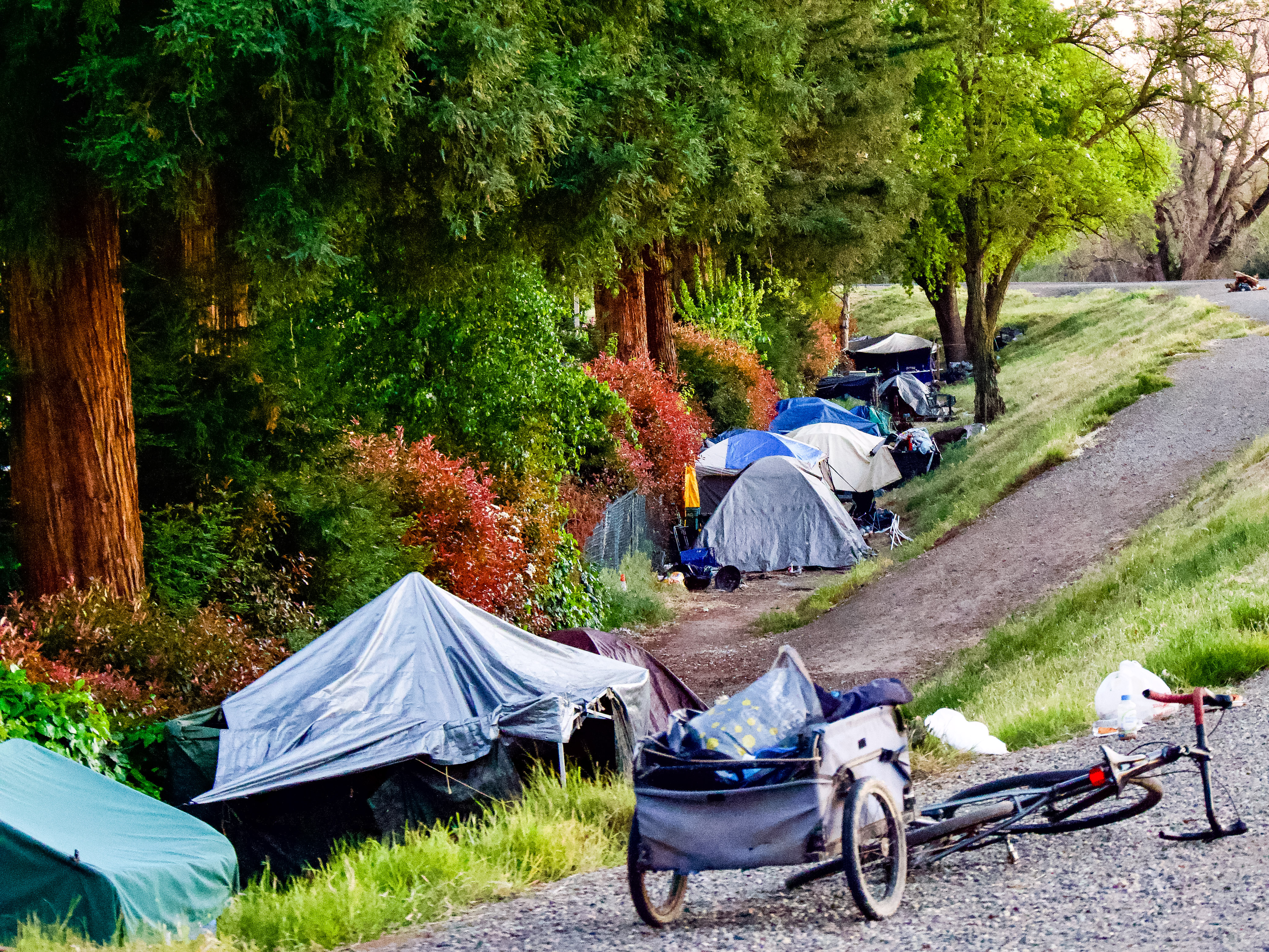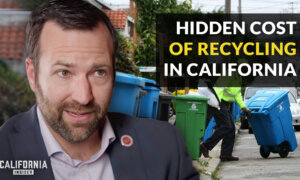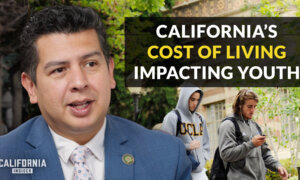Aiming to curb homeless encampments, the Sacramento County Board of Supervisors on Nov. 5 approved a county code amendment that bans public camping.
The law includes a ban on vehicles, trailers, campers, and recreational vehicles that “undermine the cleanliness and usability of parks, water supplies, and other public resources,” according to the county’s press release.
It also prohibits camping within 1,000 feet of a shelter that provides services to homeless people.
Sacramento County sheriff’s deputies started cleaning up several homeless camps Thursday after the camping ban passed, according to the department’s social media post.
“Today, deputies from the Sacramento County Sheriff’s Office East Division POP [Problem Oriented Policing] Team conducted cleanup of several unlawful encampments near Folsom Boulevard and Watt Avenue, in East Sacramento County,” the department wrote on X. “Their efforts resulted in the removal of over 5,000 pounds of garbage and debris.”
Of the 10 people deputies contacted at the camps, six were connected with help and given resource information. One was arrested on a felony warrant, according to the department.
The new law addresses the county’s duty to protect lives and infrastructure, and increases the county’s ability to supply emergency shelters, the statement said.
The lack of housing options for homeless people in Sacramento County has led to an increase in the number of encampments within the unincorporated area, according to the ordinance.
The camps typically consist of tents, makeshift structures, sleeping bags, and can include vehicles, trailers, campers, or recreational vehicles.
The encampments in some areas pose a threat to the health, safety, and welfare of not only camp residents but also the community at large because of the damage to public property, risk of fire, unsanitary conditions, and environmental degradation, according to the ordinance.
Supervisors Rich Desmond and Pat Hume said they introduced the amendment as a safety measure.
“My priority is to ensure the safety and well-being of our neighborhoods and businesses,” Desmond said in the statement. “This amendment to prohibit unlawful camping on public property is not about punishing those experiencing homelessness; rather, it’s about creating a supportive environment for all community members.”

Sacramento County Sheriff's deputies began removing homeless camps on Nov. 7, 2024, after county supervisors banned them. (Sacramento County Sheriff's Office)

The county's homeless population has grown to 6,615 in 2024. (Sacramento County Sheriff's Office)
The camping ban was first brought up at the county’s Oct. 22 meeting. Desmond told other supervisors in October that he consulted with the sheriff and district attorney to ensure the measure complied with the law.
The county needs to “strike a balance” to allow officials to address the challenges of homelessness while also keeping public spaces safe and viable, he said.
Hume said the ordinance is intended to benefit everyone.
“It’s essential that our trails, medians, county highways, and public buildings are well-maintained for the health and enjoyment of all residents,” Hume said.
Sacramento County spends more than $220 million each year on programs, services, and solutions to homelessness.
The Western Regional Advocacy Project (WRAP), a social justice organization based in San Francisco, said in a statement posted before the meeting that a ban is not the solution and would unfairly impact minorities.
“As with all policies that increase police contact, these policies pave the way for more discriminatory policing and a disparate impact on the black unhoused community and other communities of color,” Niki Jones, executive director of the Sacramento Regional Coalition to End Homelessness, wrote on the group’s website. “We will not police our way out of this social health crisis.”
Jones also said the physical and mental distress caused by the policies is “incalculable.”
“This is morally repugnant as well as ineffective at reducing homelessness, simply removing unhoused communities from sight, rather than a focus on long term support on the pathway to housing,” she said.
According to the latest count, the homeless population in the county was 6,615 this year, a nearly 30 percent decrease from 2022. The report found that 71 percent of the homeless adults with no children were unsheltered.
The survey also found about 42 percent of the homeless—or 2,788—were adults with serious mental illness.
About 45 percent of the county’s homeless were chronically so, while 17 percent were families with children and 8 percent were veterans, the latest report showed.
In October, supervisors also approved the construction bid for the Watt Avenue Service Center and Safe Stay Center, a place that will provide 225 beds in cabins, 50 parking places, and 75 beds for emergency or weather incidents. The center will also provide behavioral health services with case management, storage, job training, and other services.
The board also approved funding for Joshua House in October, a multi-million-dollar facility to provide end-of-life care for homeless and terminally ill people. The center will provide shelter, food, clothing, and volunteer comfort services.
The county is also moving ahead with an affordable housing project to shelter people trying to exit homelessness.














